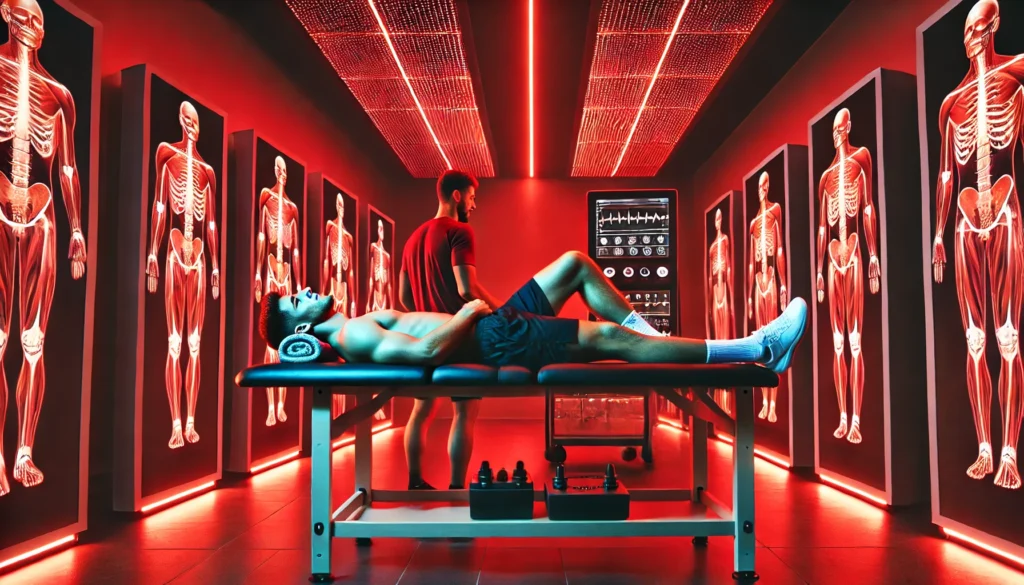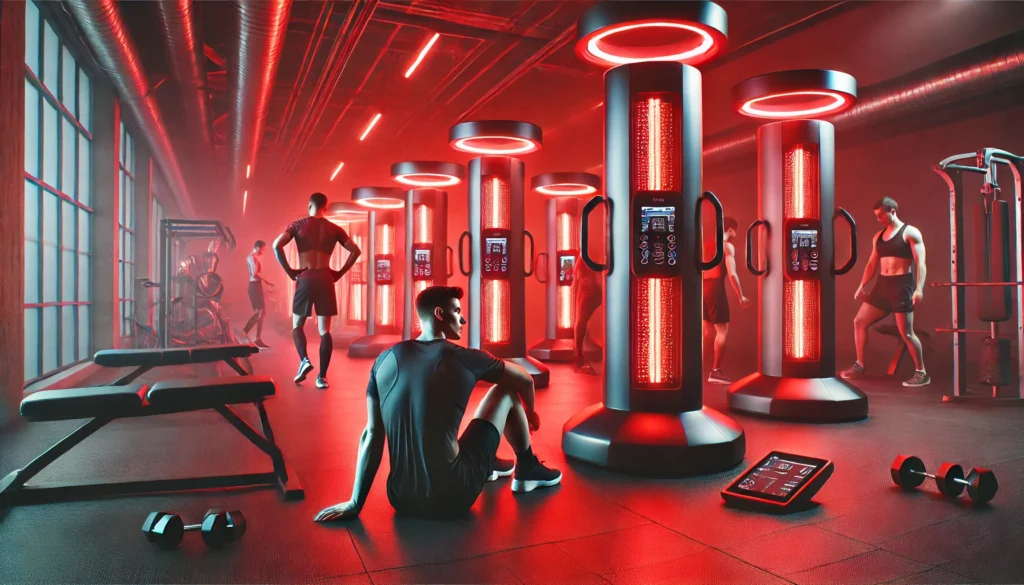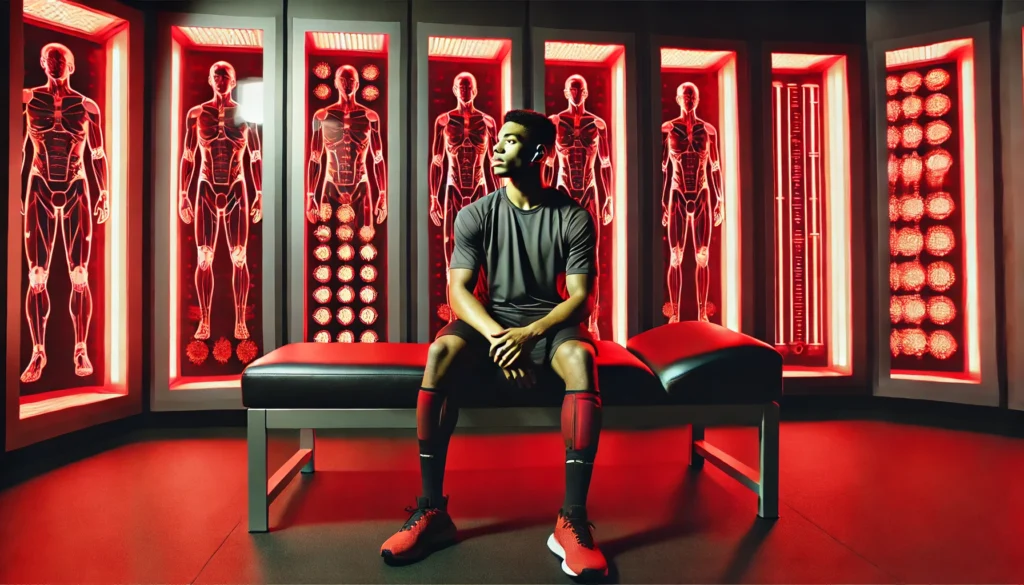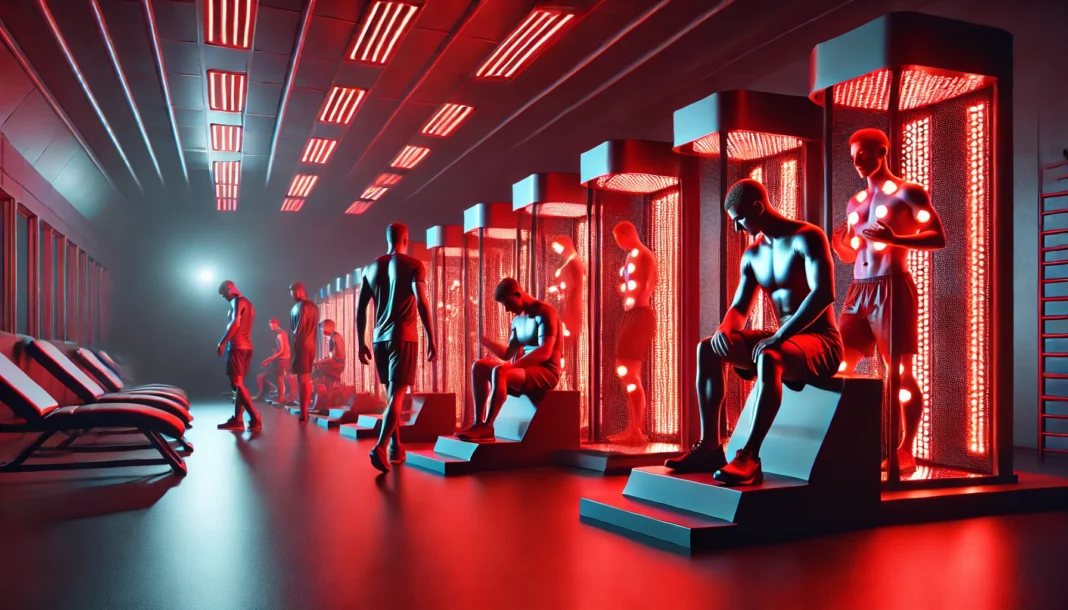Understanding Red Light Therapy and Its Benefits for Athletes
Athletes continuously push their bodies to the limit, making recovery and regeneration essential components of their training routines. Red light therapy has emerged as a revolutionary approach to enhancing athletic recovery, promoting muscle repair, and reducing inflammation. This non-invasive treatment utilizes low-wavelength red light to penetrate the skin, stimulating cellular function and accelerating tissue healing. While its benefits are widely discussed, a critical question arises: how much does red light therapy cost? Understanding the cost implications, benefits, and long-term value of this treatment is crucial for athletes and fitness enthusiasts considering it as part of their recovery regimen.
You may also like: Red Light Therapy for Muscle Recovery: How Athletes Can Speed Healing and Enhance Performance
Red light therapy is grounded in photobiomodulation (PBM), a process that enhances cellular energy production by stimulating mitochondria. By doing so, it boosts ATP production, which fuels muscle repair, reduces oxidative stress, and mitigates inflammation. These effects make red light therapy particularly valuable for athletes looking to optimize their recovery and performance. However, as with any advanced treatment, its effectiveness must be weighed against the financial investment required.
The Science Behind Red Light Therapy for Recovery
The scientific foundation of red light therapy lies in its ability to penetrate deep into tissues, stimulating the production of adenosine triphosphate (ATP) within mitochondria. ATP is the primary energy currency of cells, and its increased production leads to enhanced cellular repair and regeneration. Athletes who experience muscle fatigue, joint pain, or soft tissue injuries can benefit from red light therapy as it accelerates the body’s natural healing processes.
Beyond ATP production, red light therapy has been shown to improve circulation, reduce muscle soreness, and modulate inflammatory responses. Studies have demonstrated that exposure to red light wavelengths between 600 and 1000 nanometers can reduce delayed-onset muscle soreness (DOMS) and improve overall muscle function. Given these scientifically backed benefits, many athletes and sports professionals have incorporated red light therapy into their recovery routines.
However, before diving into this innovative therapy, it is essential to evaluate how much red light therapy costs and whether the investment is justified in terms of performance enhancement and long-term benefits.
Evaluating the Cost of Red Light Therapy: At-Home vs. Professional Treatments
The cost of red light therapy varies significantly depending on whether one opts for professional treatments at a clinic or invests in an at-home device. Professional red light therapy sessions are typically administered in specialized wellness centers, physical therapy clinics, or sports recovery facilities. These sessions can range from $25 to $200 per session, depending on the provider, session duration, and location. A full course of treatment, often consisting of multiple sessions per week over several months, can accumulate costs into the thousands.
Alternatively, at-home red light therapy devices offer a one-time investment ranging from $200 to over $3,000, depending on the brand, size, and power output of the device. Handheld devices, which are suitable for targeted therapy, generally fall on the lower end of the price spectrum, while full-body panels with medical-grade specifications are priced at the higher end. The advantage of at-home devices is the ability to use them as frequently as needed without incurring additional costs per session.
Athletes must consider their budget, frequency of use, and treatment goals when deciding between professional treatments and at-home solutions. While red light therapy cost is an important factor, convenience, effectiveness, and long-term accessibility also play critical roles in the decision-making process.

Factors That Influence the Cost of Red Light Therapy
Several factors contribute to the varying red light therapy cost, including:
- Device Quality and Power Output: Higher-end devices with greater light intensity and larger treatment areas tend to be more expensive.
- Brand and Manufacturer Reputation: Established brands often charge a premium for their products due to extensive research, clinical validation, and superior build quality.
- Treatment Duration and Frequency: Individuals requiring long-term therapy may find purchasing an at-home device more cost-effective than paying per session at a clinic.
- Additional Features: Some devices come with infrared capabilities, customizable settings, and adjustable wavelengths, increasing their price.
- Location of Service: Professional treatments are often more expensive in metropolitan areas due to higher operational costs.
Athletes should evaluate these factors to determine the most cost-effective approach to integrating red light therapy into their recovery routine.
Is Red Light Therapy Worth the Investment for Athletes?
To determine whether how much red light therapy costs is justified by its benefits, athletes must consider both short-term gains and long-term advantages. The therapy’s ability to reduce inflammation, accelerate muscle recovery, and alleviate joint pain makes it an attractive option for those engaged in intense physical activity. Additionally, its non-invasive nature and minimal side effects provide a safe alternative to traditional pain relief methods.
Professional athletes, trainers, and rehabilitation specialists endorse red light therapy for its efficacy in improving performance longevity and reducing injury downtime. While the initial cost may seem substantial, the long-term savings on physical therapy, medical treatments, and recovery downtime could outweigh the upfront investment.
Frequently Asked Questions (FAQ) About Red Light Therapy Cost and Effectiveness
What factors determine how much red light therapy costs?
The cost of red light therapy depends on several variables, including whether you opt for in-clinic treatments or an at-home device. Professional sessions at wellness centers or physical therapy clinics typically range from $25 to $200 per session, influenced by location, session length, and provider expertise. For those who prefer at-home use, devices can vary widely in price, from around $200 for smaller handheld units to over $3,000 for full-body panels with medical-grade specifications. The technology and power output of the device also impact cost, with more advanced units offering deeper penetration and broader wavelength coverage. Additionally, ongoing maintenance costs, warranty coverage, and brand reputation can also play a role in determining how much red light therapy costs in the long run.
Is red light therapy worth the investment for athletes?
For athletes looking to optimize recovery and minimize downtime, red light therapy can be a valuable investment. Unlike traditional recovery methods that focus on symptom relief, red light therapy addresses cellular function, enhancing energy production and tissue repair. Many professional athletes incorporate red light therapy into their routine to support muscle recovery, reduce inflammation, and improve endurance. While the initial investment in a high-quality device may seem steep, the long-term benefits, such as fewer injuries and improved performance, can outweigh the cost. By eliminating the need for frequent physical therapy sessions and reducing reliance on pain medications, red light therapy may ultimately prove cost-effective.
How does the cost of red light therapy compare to other recovery methods?
When evaluating the cost of red light therapy, it’s helpful to compare it with other commonly used recovery methods. Traditional physical therapy sessions can cost between $75 and $250 per visit, often requiring multiple visits per month. Cryotherapy, another popular recovery method, can range from $40 to $100 per session. Massage therapy, depending on the provider and session length, can cost $50 to $150 per session. While these methods offer benefits, red light therapy provides a unique advantage by targeting recovery at a cellular level, making it a cost-effective alternative over time. When considering long-term usage, an at-home red light therapy device can provide significant savings compared to ongoing expenses associated with other recovery treatments.
Can red light therapy replace physical therapy and other treatments?
While red light therapy is a powerful tool for enhancing recovery, it is not necessarily a complete replacement for traditional physical therapy. Instead, it should be seen as a complementary approach that enhances the effects of other treatments. Physical therapy focuses on movement correction, strength building, and functional rehabilitation, while red light therapy supports cellular repair and inflammation reduction. Many athletes use red light therapy alongside physical therapy, massage, or chiropractic care to optimize results. By integrating multiple recovery strategies, athletes can maximize their performance and minimize injury risk more effectively than relying on a single treatment alone.
How frequently should red light therapy be used for optimal results?
The frequency of red light therapy sessions depends on individual needs, treatment goals, and the severity of muscle fatigue or injuries. Athletes using red light therapy for general recovery typically benefit from sessions 3 to 5 times per week, with each session lasting 10 to 20 minutes. For those recovering from an injury, more frequent use—up to once or twice daily—may accelerate the healing process. The long-term cost-efficiency of at-home devices becomes evident in these cases, as professional sessions can quickly add up. Maintaining a consistent routine is key, as the cumulative benefits of red light therapy improve tissue resilience and promote long-term recovery.
Are there any hidden costs associated with red light therapy?
Beyond the upfront expense of purchasing a red light therapy device or paying for professional sessions, there are a few additional costs to consider. Electricity usage for home devices is typically minimal, but some high-powered panels may increase energy consumption slightly. Replacement parts, such as LED bulbs, are rare but may be necessary over time. Some clinics offer package deals or memberships that reduce per-session costs but require an upfront financial commitment. Additionally, protective eyewear may be necessary for certain wavelengths, adding a minor cost. While these expenses are generally small, they should be factored into the overall investment in red light therapy.
How does the effectiveness of at-home red light therapy devices compare to clinical treatments?
High-quality at-home red light therapy devices can provide results comparable to professional treatments, but there are some distinctions to consider. Clinical treatments often use more powerful equipment with precise calibration, ensuring optimal wavelength penetration and energy delivery. However, with advancements in technology, many at-home devices now feature medical-grade specifications that offer similar benefits. The key difference lies in proper usage—consistent and correct application at home is essential to achieving the same level of effectiveness. For individuals willing to invest in a high-quality device and commit to regular use, at-home therapy can be just as effective while significantly reducing overall red light therapy cost.

Can red light therapy help with injury prevention as well as recovery?
Yes, red light therapy can play a proactive role in injury prevention by strengthening tissues, improving circulation, and reducing inflammation before issues arise. Regular use enhances mitochondrial efficiency, leading to more resilient muscles and joints that are less susceptible to strain or overuse injuries. Athletes who incorporate red light therapy into their routine may experience improved flexibility and reduced muscle tightness, which can help prevent common injuries such as sprains or tendonitis. By addressing underlying cellular health, red light therapy supports overall musculoskeletal integrity, making it a valuable tool for both recovery and prevention. When assessing how much red light therapy costs, the potential savings from avoiding injury-related expenses should also be considered.
What should buyers look for when choosing a red light therapy device?
When investing in an at-home red light therapy device, buyers should consider factors such as wavelength range, power output, treatment area size, and safety features. Devices with wavelengths between 600 and 1000 nanometers are optimal for muscle recovery and inflammation reduction. Higher power output ensures deeper penetration and faster results, but intensity should be adjustable for different needs. The treatment area is also important—handheld units work well for targeted use, while larger panels allow for full-body therapy. Reputable brands with clinical backing and warranties provide added assurance. While considering red light therapy cost, prospective buyers should prioritize long-term durability and effectiveness over lower upfront costs.
How does red light therapy impact long-term athletic performance?
Red light therapy’s long-term impact on athletic performance goes beyond short-term recovery benefits. By improving cellular efficiency and reducing oxidative stress, regular use contributes to sustained endurance, enhanced muscle function, and overall resilience. Athletes who incorporate red light therapy into their training regimens may experience faster adaptation to exercise stress and reduced cumulative muscle damage over time. This can lead to improved consistency in performance, fewer setbacks due to injuries, and enhanced longevity in sports. While evaluating how much red light therapy costs, the potential for extended career performance and fewer medical expenses can make the investment worthwhile.

Conclusion: Making an Informed Decision About Red Light Therapy
When considering how much does red light therapy cost, athletes and fitness enthusiasts must balance the financial commitment with the potential benefits. The choice between professional treatments and at-home devices depends on individual needs, budget constraints, and frequency of use. While clinic-based therapy provides expert guidance and targeted treatment, at-home solutions offer cost-effective, long-term accessibility.
Ultimately, red light therapy presents a compelling case for athletes seeking enhanced recovery, reduced inflammation, and improved performance. Those willing to invest in high-quality devices or consistent professional treatments may find the benefits far outweigh the cost, making it a valuable addition to their athletic recovery and regeneration regimen.
red light therapy benefits, red light therapy devices, photobiomodulation therapy, muscle recovery therapy, sports performance recovery, injury prevention, athletic rehabilitation, inflammation reduction, red light therapy effectiveness, professional red light therapy, at-home red light therapy, red light therapy for athletes, red light therapy cost comparison, muscle soreness relief, non-invasive therapy, pain management for athletes, sports therapy solutions, red light therapy pricing, advanced recovery techniques, red light therapy for endurance athletes
Further Reading:
Does red light therapy work? These are the benefits and drawbacks
Is Red Light Therapy Worth The Investment? – 7 Things To Know Before Getting One
Are Red Light Therapy Devices Worth the Investment?
Disclaimer
The information contained in this article is provided for general informational purposes only and is not intended to serve as medical, legal, or professional advice. While NewsHealthWatch strives to present accurate, up-to-date, and reliable content, no warranty or guarantee, expressed or implied, is made regarding the completeness, accuracy, or adequacy of the information provided. Readers are strongly advised to seek the guidance of a qualified healthcare provider or other relevant professionals before acting on any information contained in this article. NewsHealthWatch, its authors, editors, and contributors expressly disclaim any liability for any damages, losses, or consequences arising directly or indirectly from the use, interpretation, or reliance on any information presented herein. The views and opinions expressed in this article are those of the author(s) and do not necessarily reflect the official policies or positions of NewsHealthWatch.

